Site Tour 02 Tekijyuku × Osaka Science Museum × Osaka Prefectural Nakanoshima Library
Tracking the History of Science and Science in Osaka
Date and time: Sunday, November 18, 2018 13:00-16:00
Participation fee: 1,000 yen
Navigator: Kazutsuji (Curator Manager, Osaka Science Museum)
Joint project: Osaka Science Museum, The University of Osaka Tekijyuku Memorial Center, Osaka Prefectural Nakanoshima Library
Visit the "knowledge" of Osaka
At noon on November 18th, many people gather next to Osaka Science Museum. Your goal is to take part in a tour of the academic and scientific hubs that once gathered in and around Nakanoshima. Guided by Kazuto Tsuguto, the section manager of the Osaka Science Museum, we will walk around here and there on foot.
Kasu Osaka has the image of an economic city as represented by the word "kitchen of the world", but it is also a land where advanced science and technology has taken root from ancient times to modern times. For example, in the old days, the construction of Namba Shrine required advanced building techniques, and in Doshomachi, medicine-related companies are lined up from the Edo period to the present. Today, cutting-edge manufacturing, including aircraft and rocket parts, is being carried out at a factory in Higashi-Osaka next door. This time, let's focus on the historical sites of scientists related to Osaka, specializing in Showa from the Edo period.
The first point we went through a short lecture was about a 0-minute walk from the Hall of Science (!) 。 It is a monument standing quietly behind the Hall of Science. An object like an atom motif shows proof that there was once a school of science in The University of Osaka. In the days of Osaka Imperial University, the predecessor of The University of Osaka, the university was located here from 1931 to 1939. At Osaka Teikyo Univ., which welcomed Hantaro Nagaoka, a world-renowned physicist for inventing a structural model of atoms in the shape of Saturn, as its first president, outstanding researchers such as Nobel laureate Hideki Yukawa gathered in the Faculty of Science. Nagaoka's inscription on the monument, "Don't swallow Kasukasu" (always original) symbolizes the spirit of Osaka Univ.
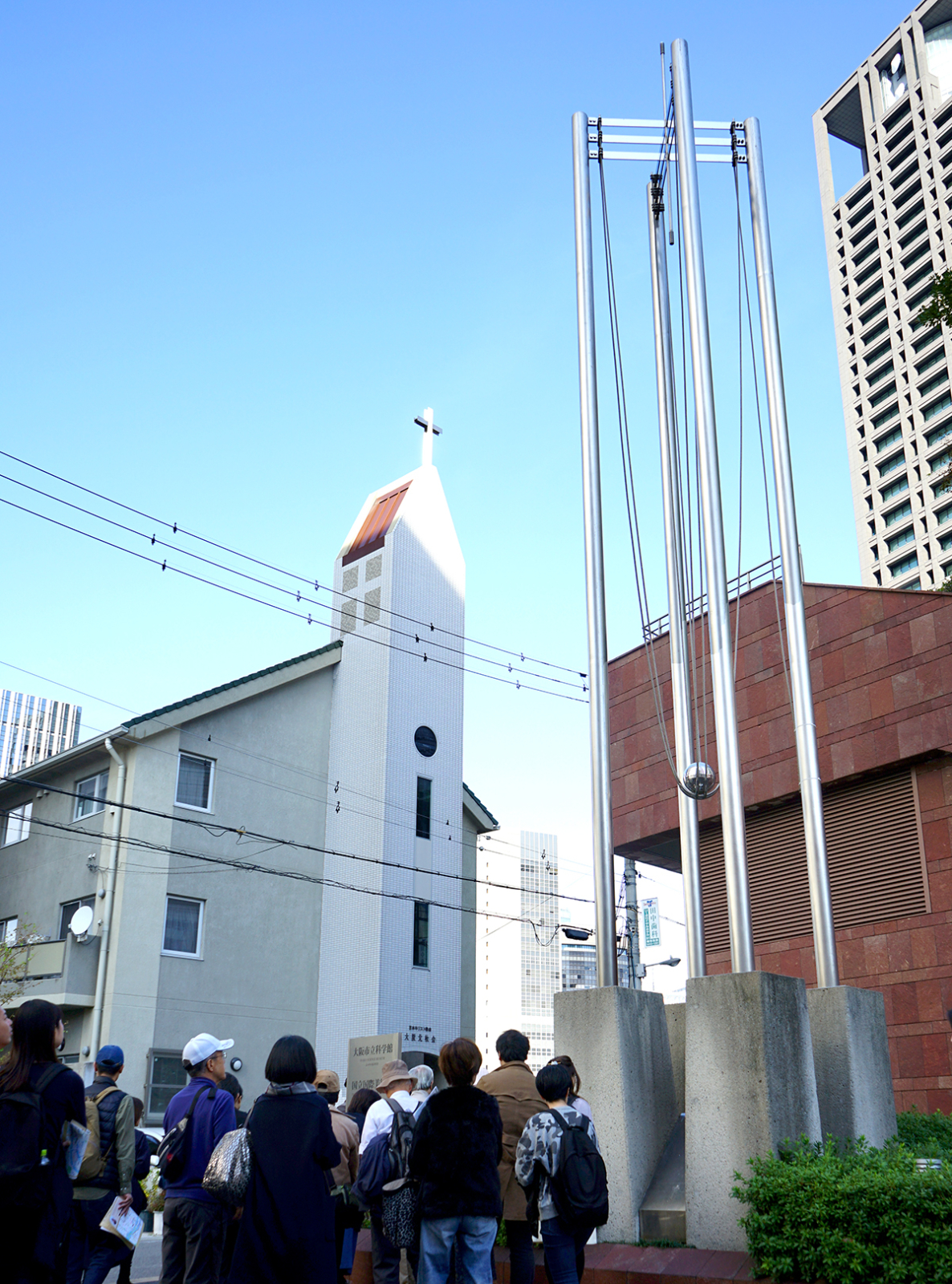
City foreseeing the future
It is an ordinary park that crossed Tosabori River on the south side of Nakanoshima. This is the site of Shishisai Juku, which was opened by Koan Ogata's teacher, Tennyu Naka. Although he was a medical practitioner, he was sparsely engaged in business with research skin, and although he was unknown because there are few existing materials, he was also an excellent researcher who did not only medical science but also research on optical and universal gravitation.
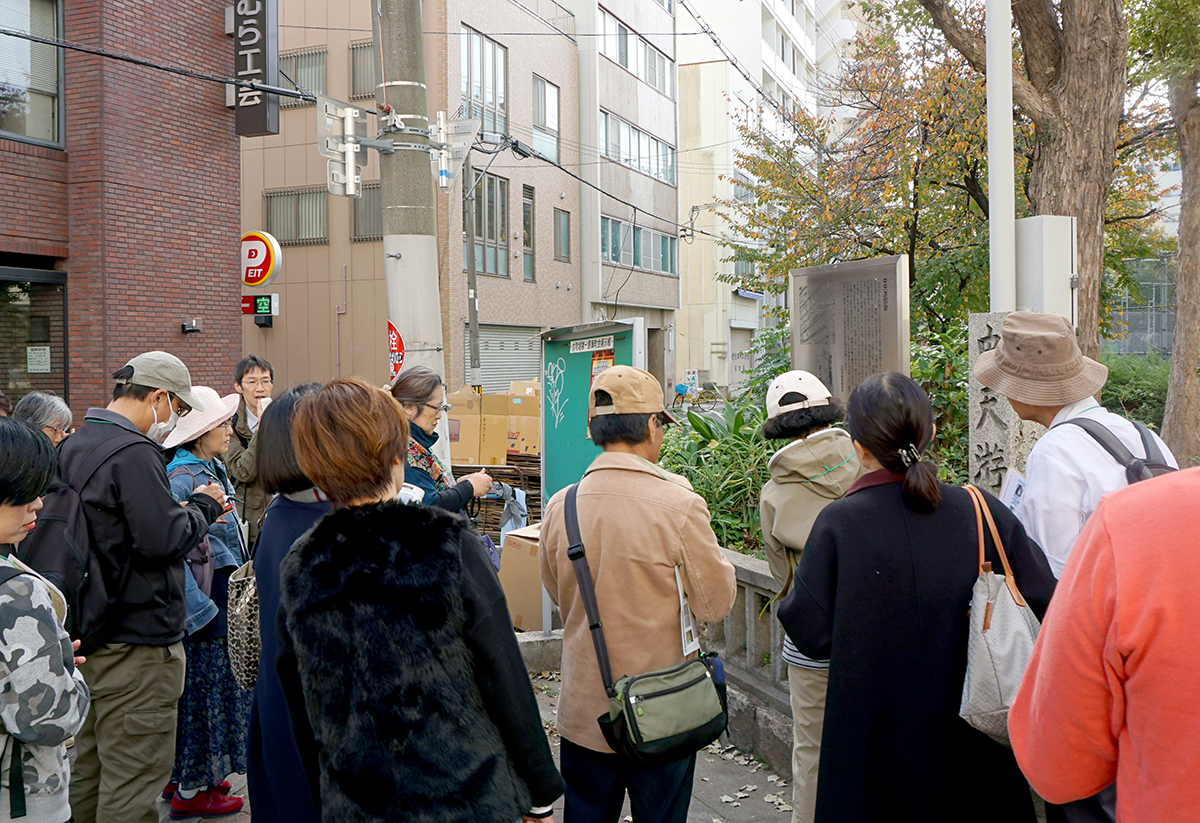
After returning to the road and stopping at the birthplace of Yukichi Fukuzawa on the banks of Dojima River, we headed to the Neobaroque Osaka Prefectural Nakanoshima Library, especially in Nakanoshima. The museum, which is designated as an Important Cultural Property, also houses the Sumitomo family's ancient document and local materials, which donated funds for book purchase, as well as books related to science. Here, Kakazu explained some of the materials he picked up by himself. One of them is Sokichi Hashimoto's "Electerual Hara in the Netherlands" (materials can be viewed at the library).
Sokichi Kasu is a master of Tennyu Naka and the first Dutch scholar in Osaka. Originally, he used to draw umbrellas, but he studied abroad in Edo because of his excellent memory. It is said that he learned 40,000 Dutch in just four months. The most famous is the research using electroquiter, known as Gennai Hiraga, which was introduced. Gennai used electric appliances mainly as a showcase, while Muneyoshi used them to study electricity academically. In other words, it is also called the originator of Japanese electrology.
In addition, materials that convey the knowledge of astronomy that people had grasped during the Edo period were introduced, and about 200 years ago with a scientific and modern sense and knowledge that was completely different from the image of a historical drama, the figure of Osaka people came up.
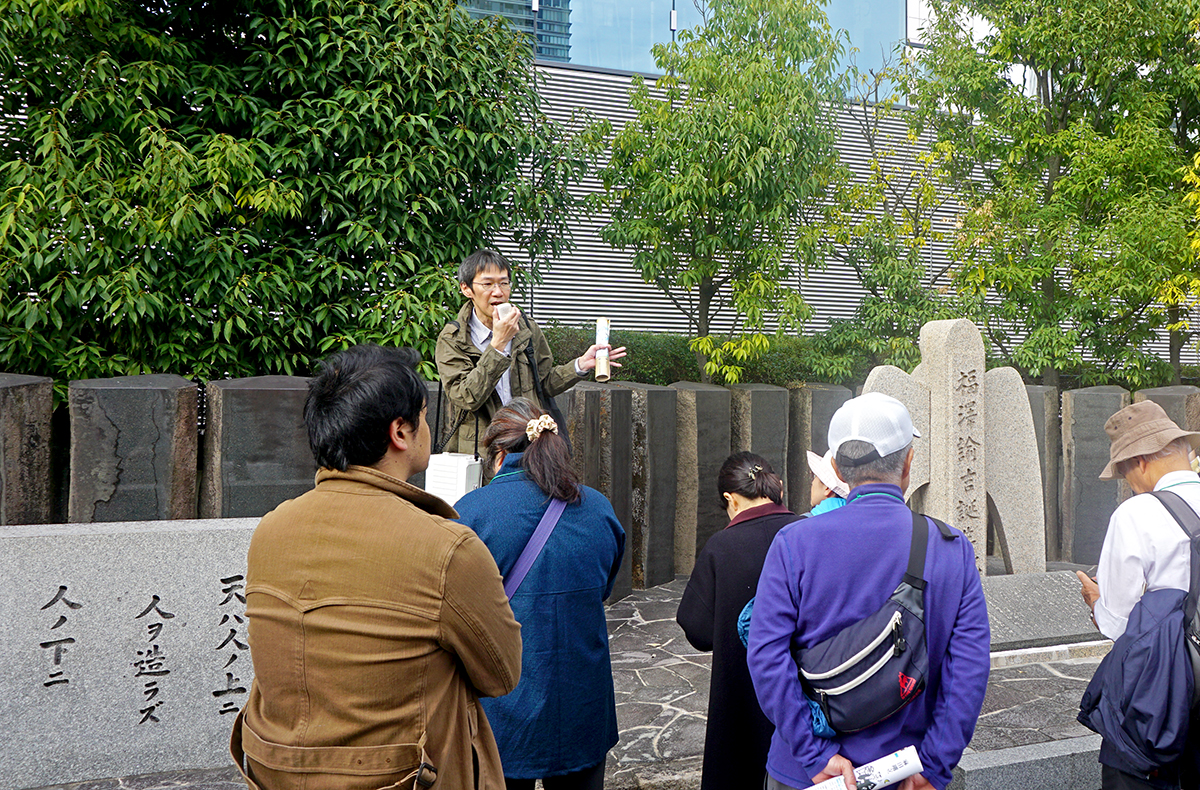
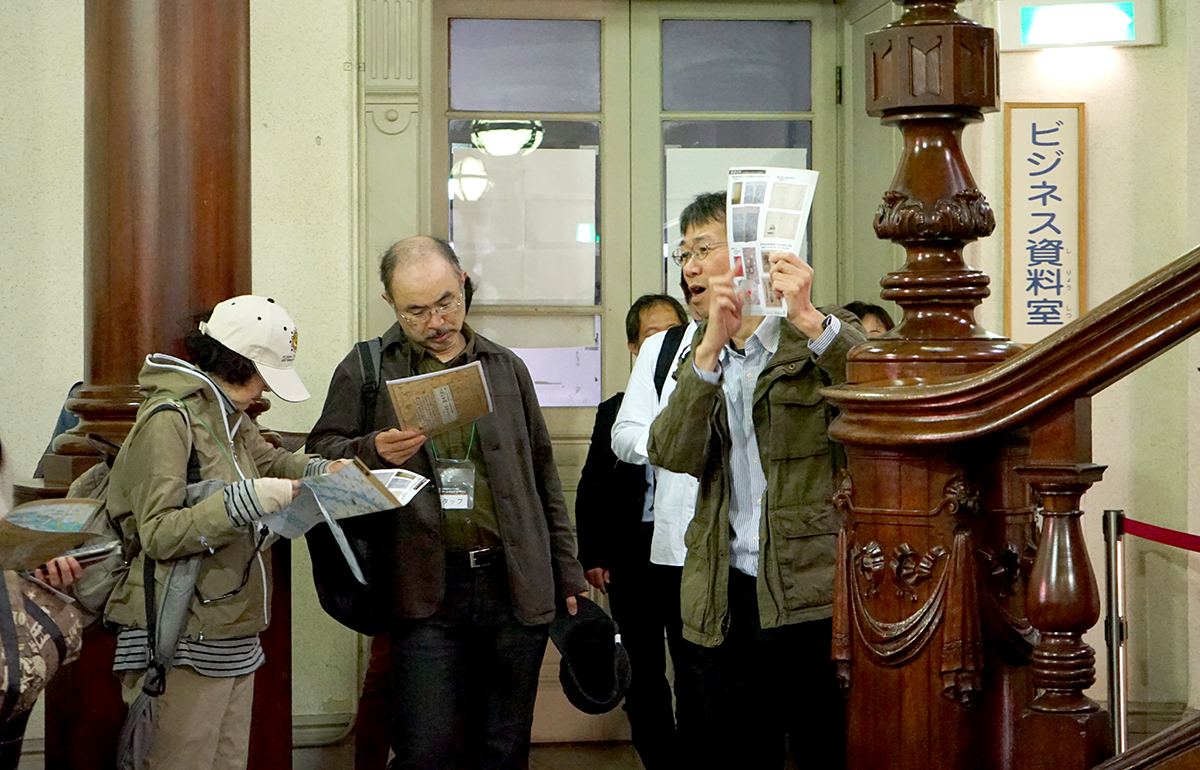
Stand up from the people
After passing through the ruins of Kaitokudo, a Confucian school established by townspeople with funds, to Aiju Kindergarten, which is still used as the oldest wooden kindergarten in Japan. This area was home to a copper exchange in the Edo period (the current kindergarten building itself is not related to the copper seat).
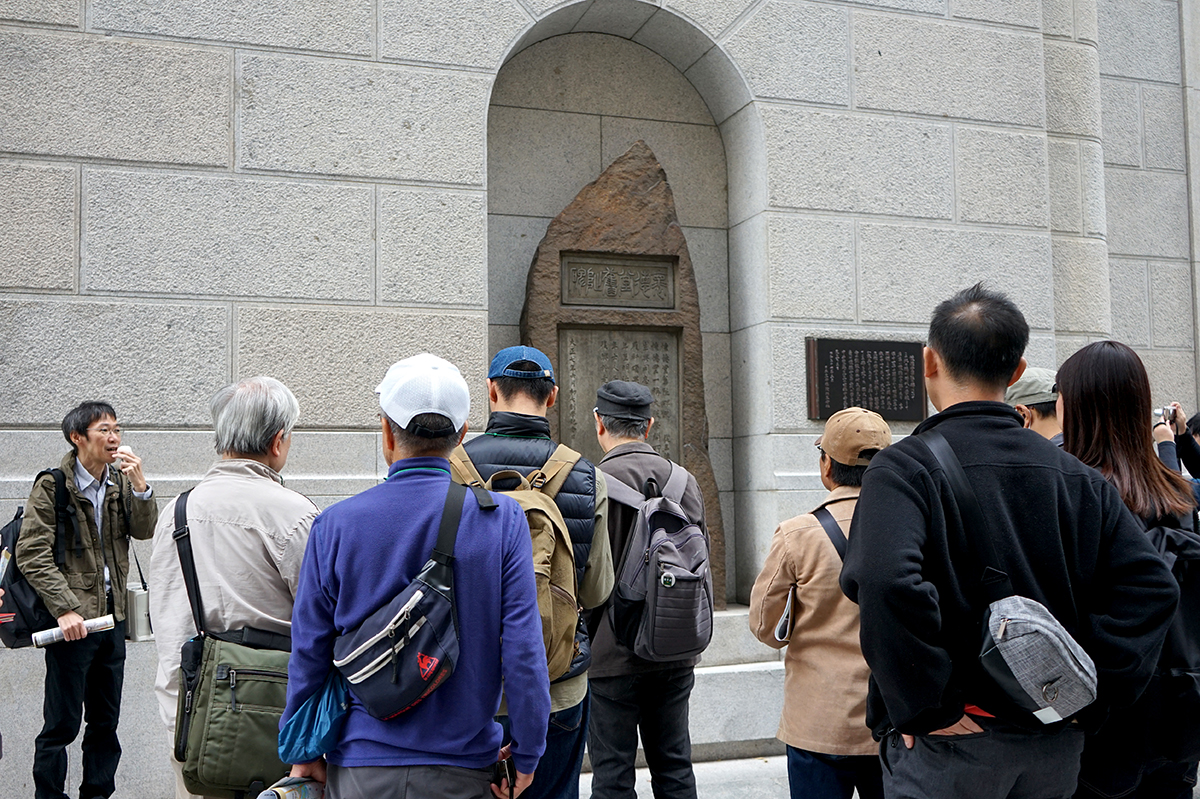
During the Edo period, there was a factory to refine copper produced nationwide in Osaka, and copper refined in Osaka was distributed both domestically and internationally. In particular, the copper used in trade with overseas traveled to Europe through the Dutch East India Company, and at one time influenced the copper market in the West.
And to Tekijyuku, the destination of today's goal. A private school in Dutch Studies opened by Koan Ogata, a selection of elites from all over the country gathered to produce about 1,000 students. Among them, important people who were deeply involved in the Meiji Restoration, and Yukichi Fukuzawa and others who left a mark on modernization after the Meiji era were also named.
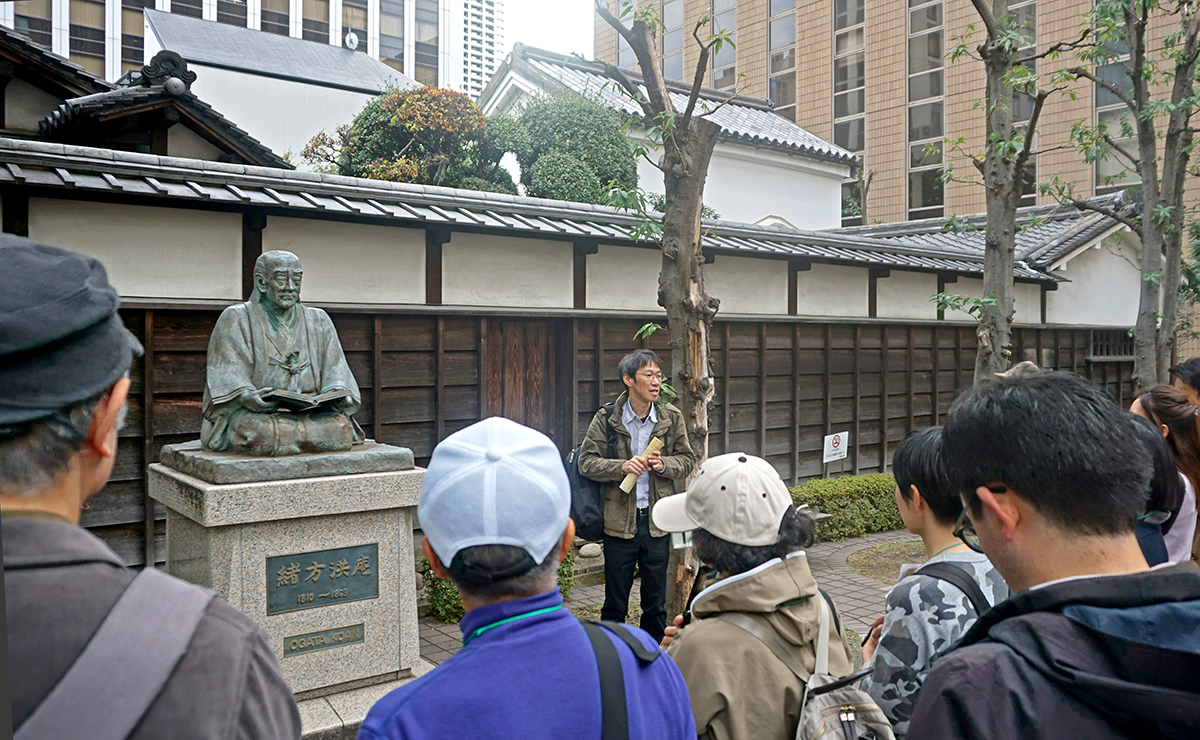
It is a distinguishing feature of Osaka and Nakanoshima that many of the places we visited on this day are open to the public. Commerce and learning are difficult to share, such as Kaitokudo and Tekijyuku, the roots of The University of Osaka. It was a special tour that felt the ambition and inquisitiveness of the young people, and the will of the townspeople who supported it.
[text: Taisuke Shimanuki]